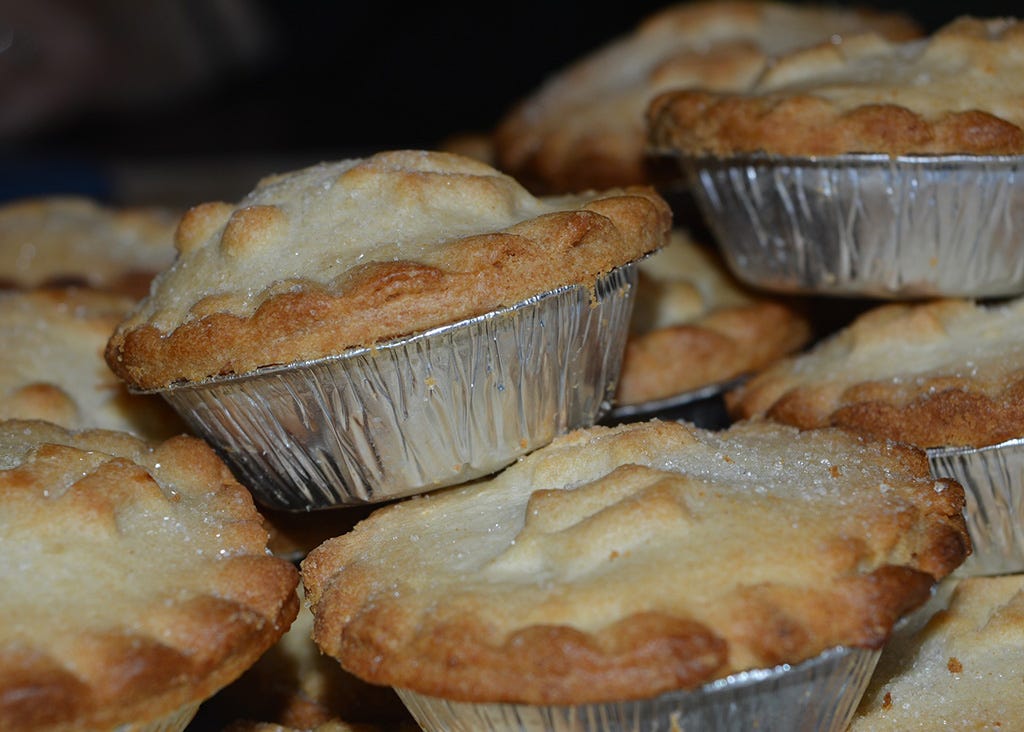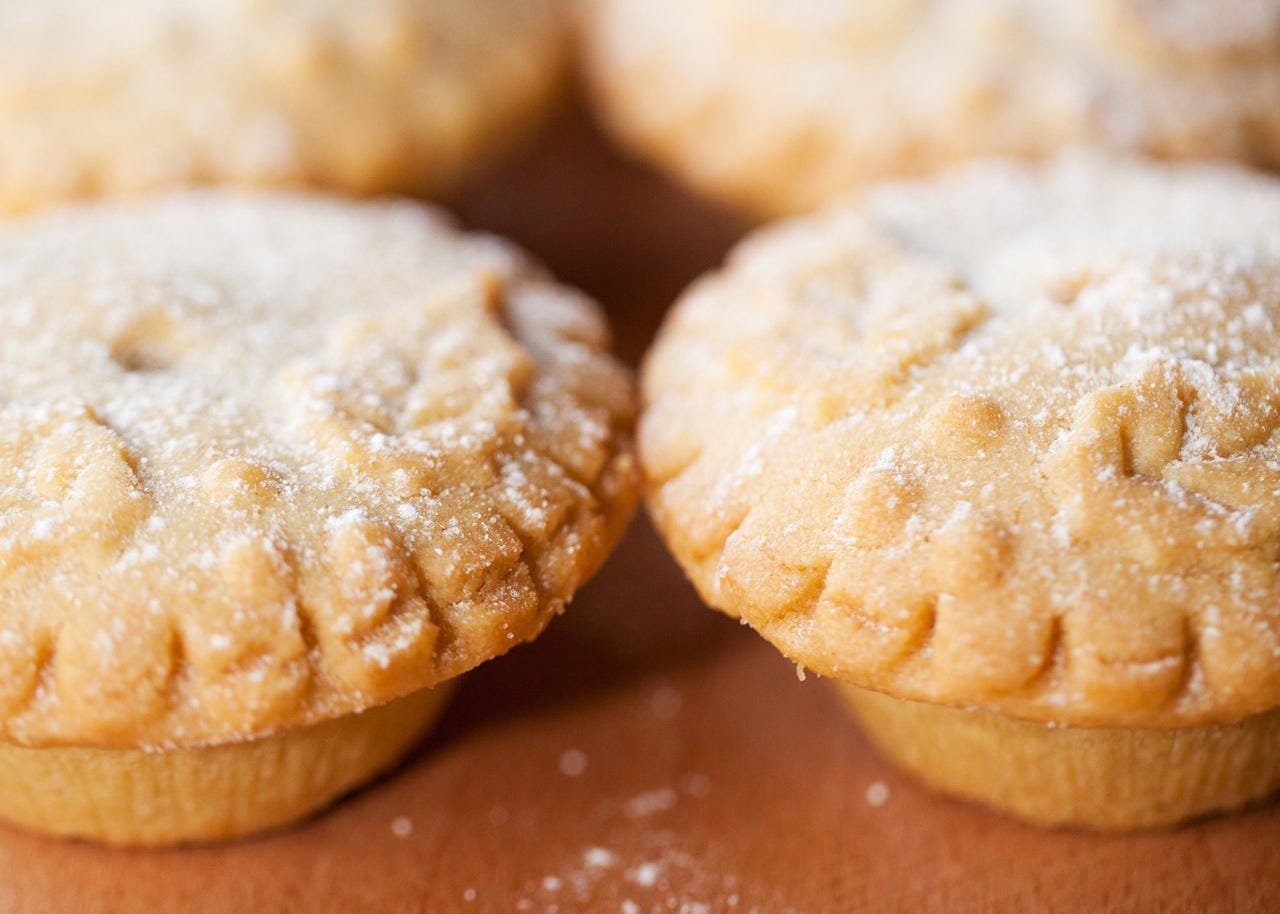The Mince Pie – a Christmas tradition
Categories:
Christmas for me only really begins once I’ve had my first mince pie. It’s a bit like seeing the first daffodil that heralds the beginning of spring or the first sighting of a Swallow that signifies summer is on not far away. I can’t say I was a big fan of them growing up, but times and tastes change. Now I will enjoy one hot or cold, made from shortcrust or puff pastry. I’m not fussy. To me, a mouthful of mince pie is a mouthful of Christmas (more-so than Christmas pudding which I am still coming to taste-terms with). That’s not to say I swoop on them as soon as they appear, seemingly ever-earlier, on supermarket shelves. Anytime in December is fine with me. We always hand out mince pies and mulled wine at our store’s late night opening so customers can enjoy them whilst listening to carols played by a local silver band. This led me to wondering what the origins are behind this Christmas tradition.
 History of the mince pie
History of the mince pie
Like the original Christmas pudding, the filling of a mince pie was originally made from meat and not mixed fruit as it is today. In medieval times desserts as we know them today didn’t really exist, but it was quite normal to combine sweet flavours into meat dishes. Over time meat was dropped from the ingredients to become the sweet treat we are accustomed to today. Mince pies were also a different shape. They would commonly be rectangular or oval and it wasn’t long before people began to associate the shape with the manger that the baby Jesus slept in. The top of the pie symbolises his swaddling clothes. The addition of spices and dried fruit into the mince pie was a sign of wealth and prosperity as these ingredients were difficult to come by and expensive to buy. During the Stuart and Georgian periods the humble mince pie soon became a status symbol during the festive period. To show one’s standing, the landed gentry would throw elaborate parties and have different shaped pies made by the very best pastry cooks of the day. Stars, hearts, crescents and even flowers were all popular designs as were shapes that could fit together to make a mince pie jigsaw. One custom that I may have a go at this year comes from the middle ages. It was said that if you ate a mince pie every day from Christmas through to Twelfth Night, it would bring you happiness for the following year. A more common custom today, and one that we do in our house each year, is to leave a mince pie and a drink out for Father Christmas (not forgetting a carrot for Rudolph) on Christmas Eve. His tipple of choice in our home is red wine!!
Traditional Mince Pie Recipe
Thanks to Kitchen Craft for this traditional mince pie recipe Ingredients
- 1 egg
- 2 tbsp water
- Flour for dusting
- Icing sugar
- 16oz sweet mincemeat
- 24oz shortcrust pastry (ready-to-roll is perfect)
Equipment
- 12 hole baking pan
- Rolling pin
- 7cm and 6cm round fluted pastry cutters (optional 6cm star cutter)
- Mixing bowl
- Pastry brush
- Cooling rack
Method Preheat your oven to 200°C (390°F/ Gas mark 6) Sprinkle some flour onto your worktop. Roll out the pastry (adding extra flour if needed) until you get a thin sheet (about 3mm). Using a 7cm round fluted pastry cutter cut out 12 disks and line the baking pan. Fill each with a spoonful of mincemeat. Roll out the remainder of the pastry and, using a 6cm round fluted pastry cutter, make the pie lids. For an extra festive twist use a star cutter to make to make the lids Brush around the edge of the lids with some water and place it (wet side down) onto the open pie. Seal around the edges using your fingers and coat the lids with a wash of beaten egg. Make a small incision in the pie lid using the tip of a sharp knife or snip with a pair of scissors. Place on the middle shelf of your oven and bake for around 20-25 minutes or until the pastry is golden brown. Cool on a wire tray and give them a light dusting of icing sugar. Enjoy them on their own or with a dollop or cream! 
